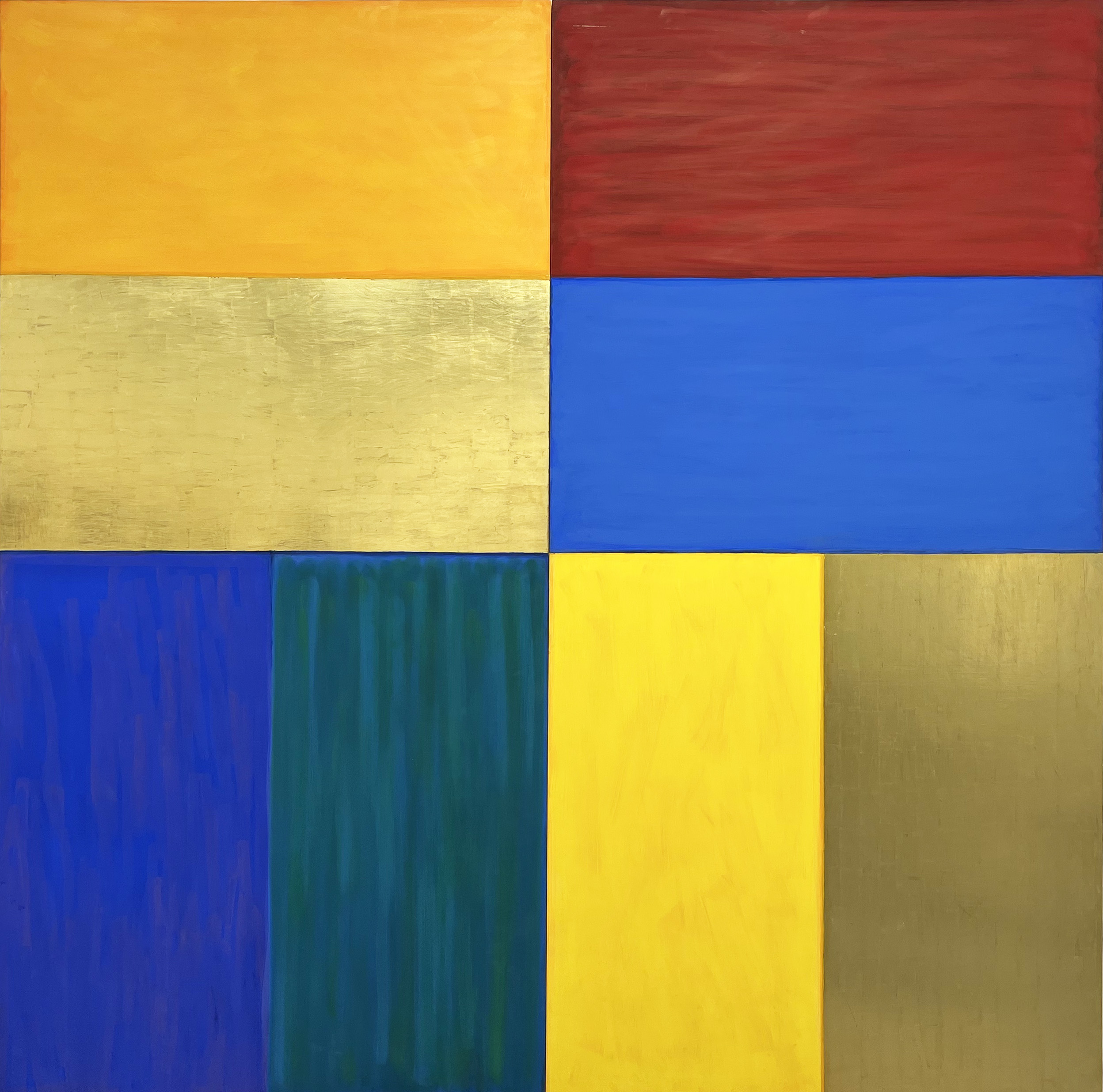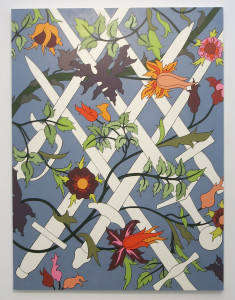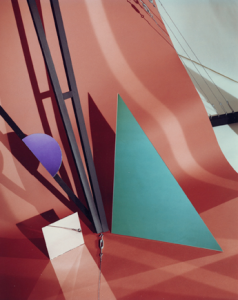Inspired by her love of art history and travel to Italy, New York-based artist Mary Obering infuses modern, minimal style with references to early Renaissance art to create dynamic and luminous paintings. Bortolami Gallery’s current presentation of her work from 1972 – 2003 includes this 1992 painting that balances light and dark colors in a way that moves the eye around the canvas, creating a lively circular movement enriched by glowing panels of gold leaf. Blocks of color in egg tempera – painted to show the artist’s hand through fluctuations of color – have an extra vibrant glow, adding to the uplift and pleasure of the piece. (On view in Tribeca through Feb 26th. Masks and social distancing are required.)


